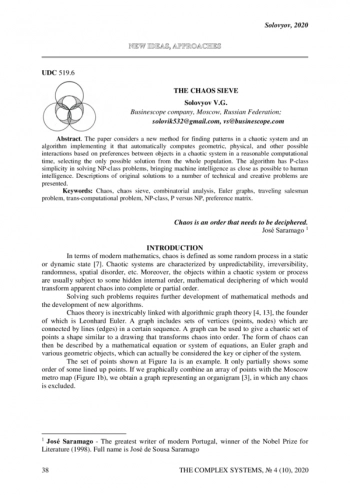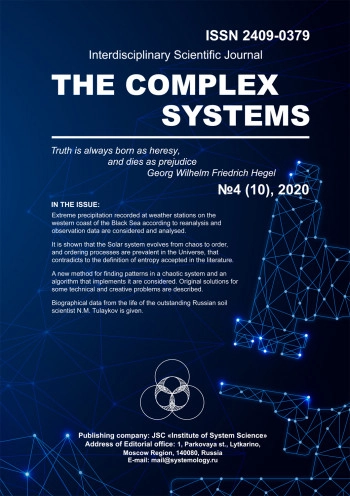The paper considers a new method for finding patterns in a chaotic system and an algorithm implementing it that automatically computes geometric, physical, and other possible interactions based on preferences between objects in a chaotic system in a reasonable computational time, selecting the only possible solution from the whole population. The algorithm has P-class simplicity in solving NP-class problems, bringing machine intelligence as close as possible to human intelligence. Descriptions of original solutions to a number of technical and creative problems are presented.
Сайт https://scinetwork.ru (далее – сайт) работает по принципу агрегатора – собирает и структурирует информацию из публичных источников в сети Интернет, то есть передает полнотекстовую информацию о товарных знаках в том виде, в котором она содержится в открытом доступе.
Сайт и администрация сайта не используют отображаемые на сайте товарные знаки в коммерческих и рекламных целях, не декларируют своего участия в процессе их государственной регистрации, не заявляют о своих исключительных правах на товарные знаки, а также не гарантируют точность, полноту и достоверность информации.
Все права на товарные знаки принадлежат их законным владельцам!
Сайт носит исключительно информационный характер, и предоставляемые им сведения являются открытыми публичными данными.
Администрация сайта не несет ответственность за какие бы то ни было убытки, возникающие в результате доступа и использования сайта.
Спасибо, понятно.



